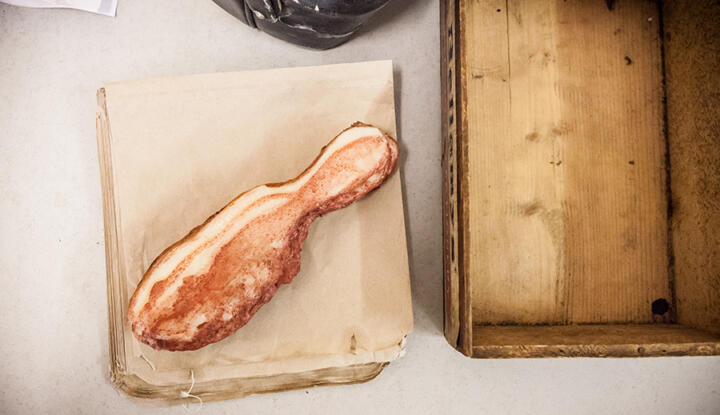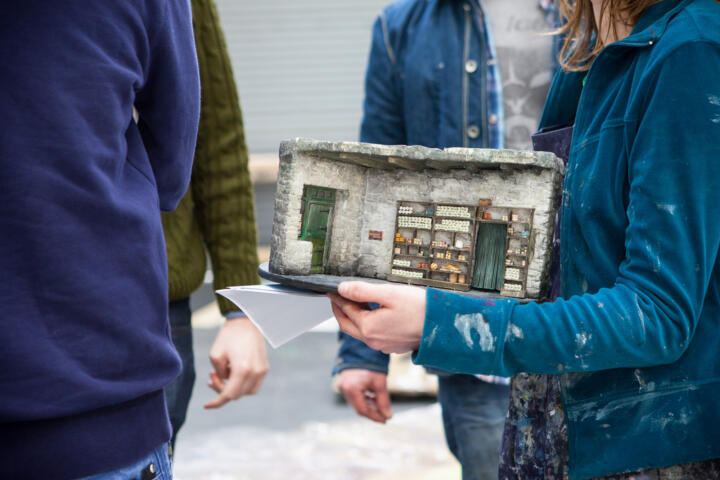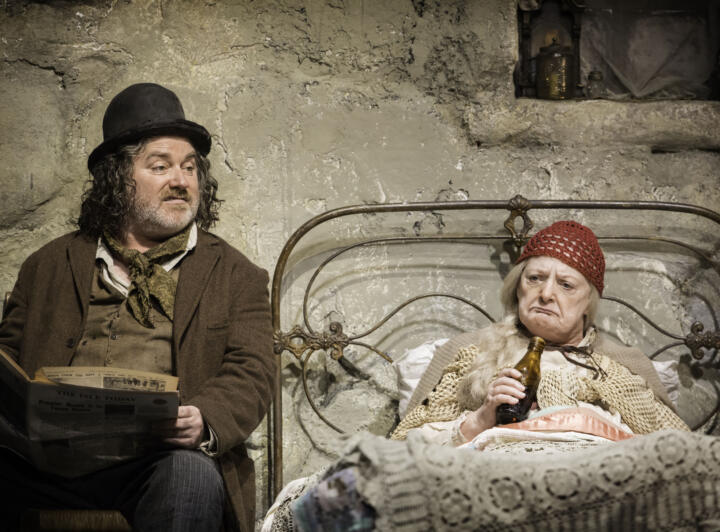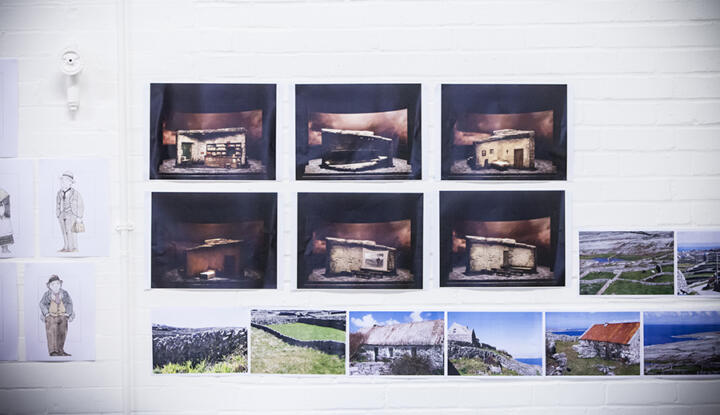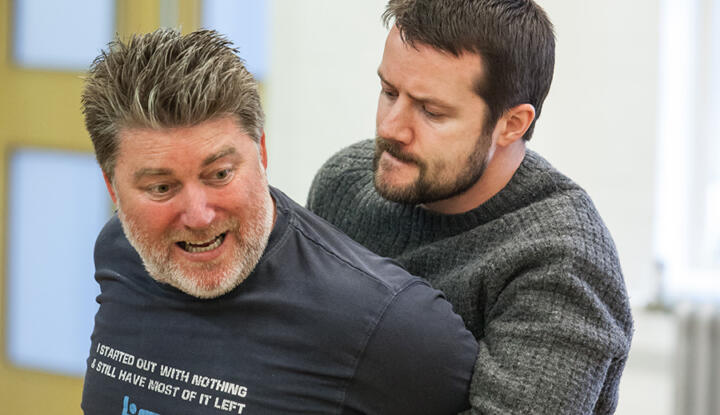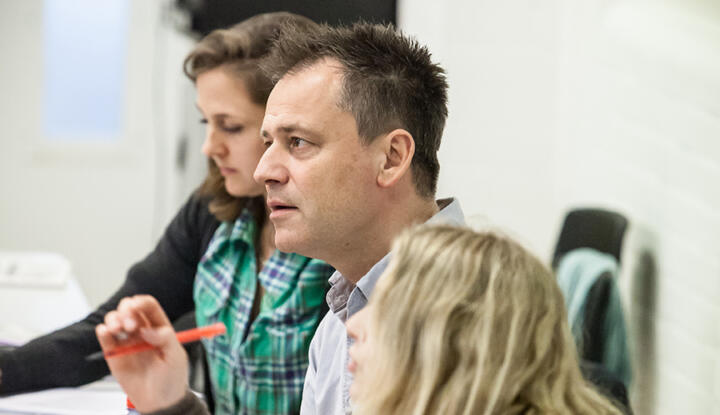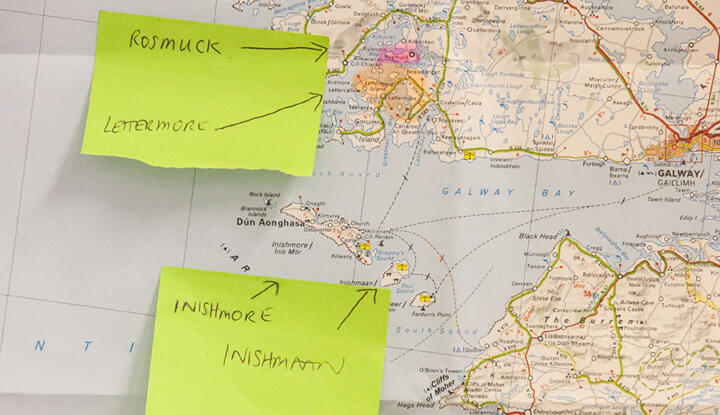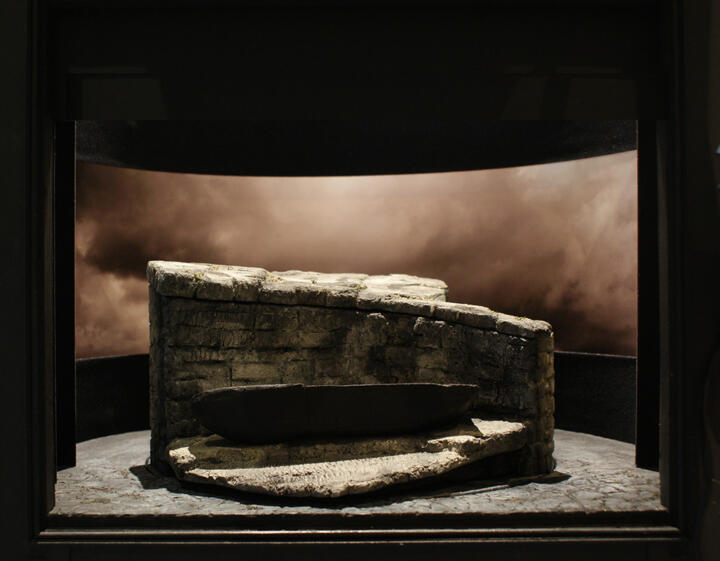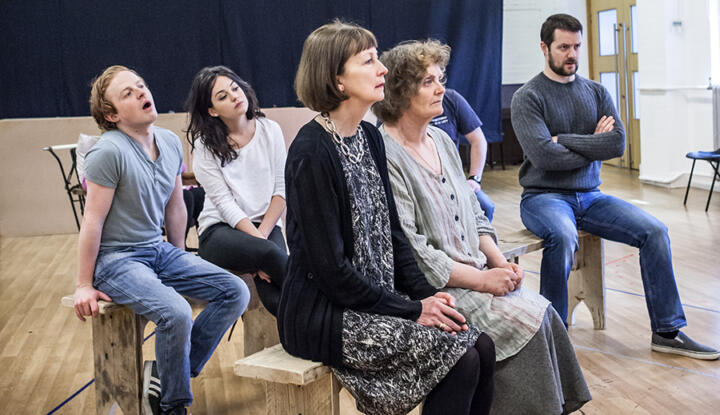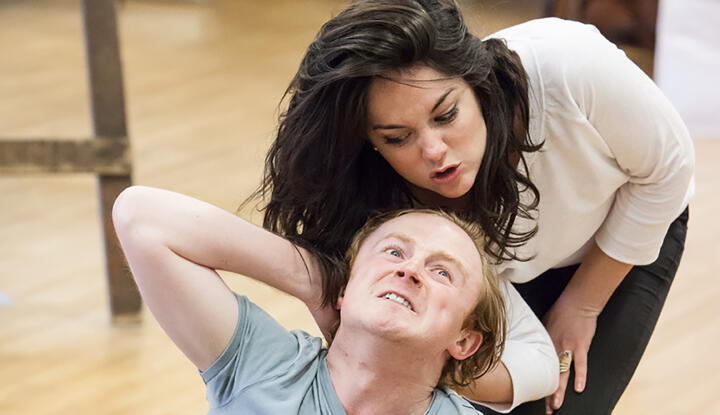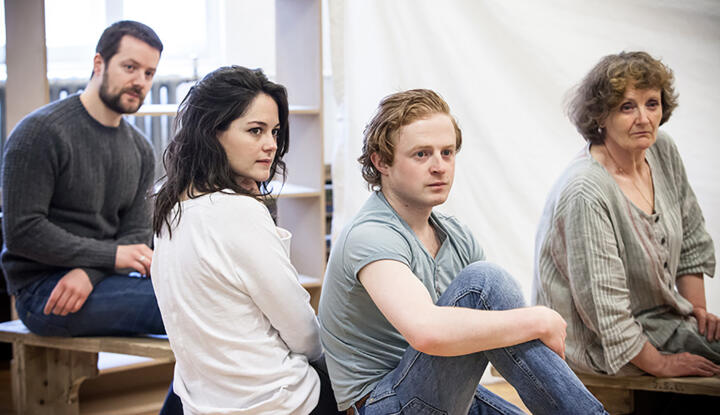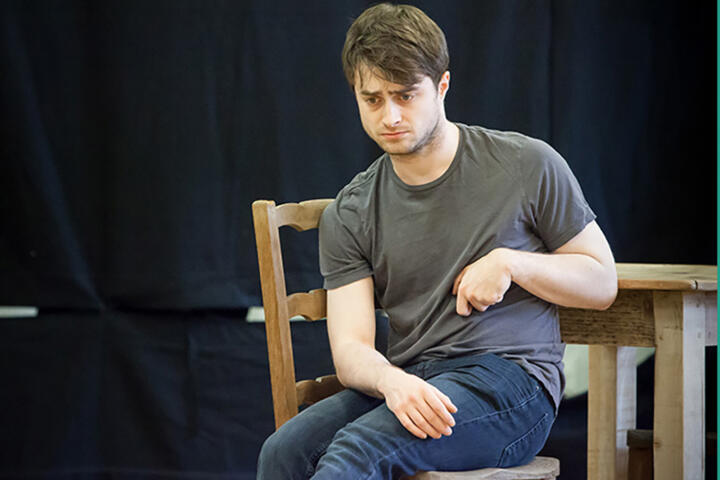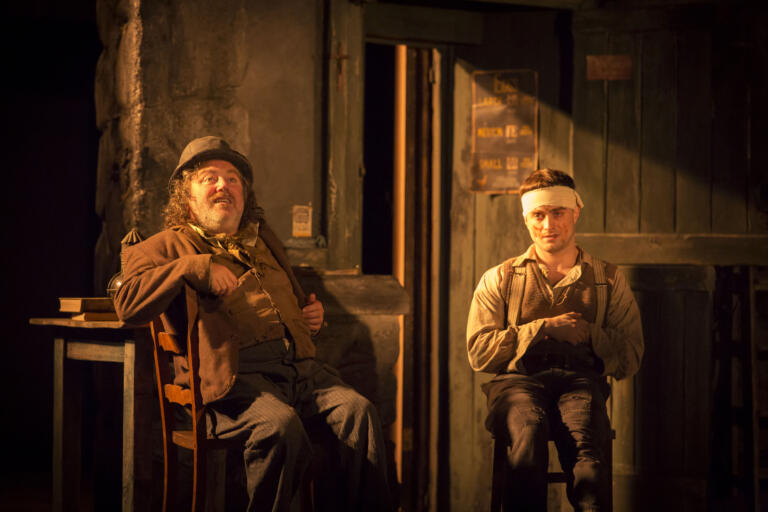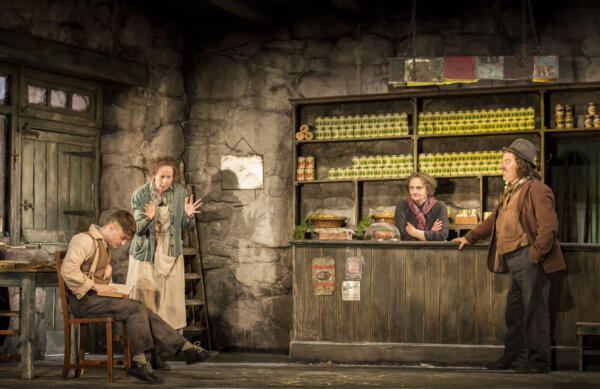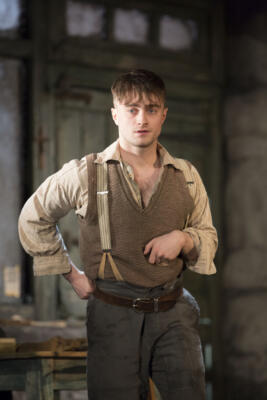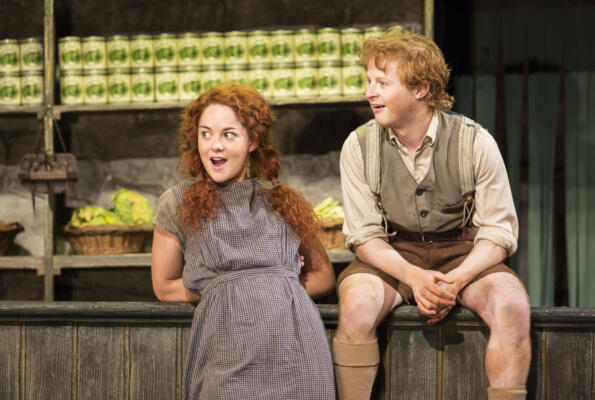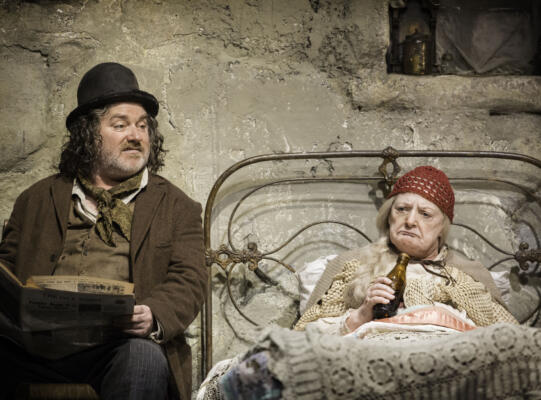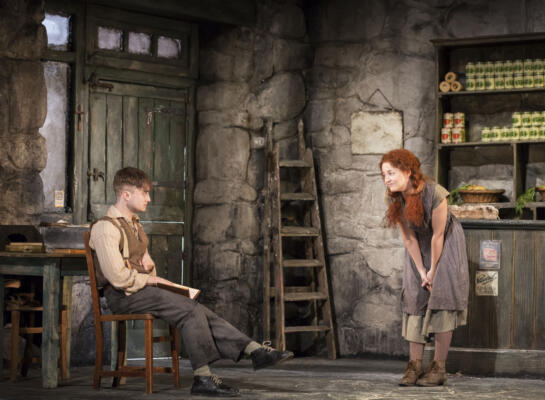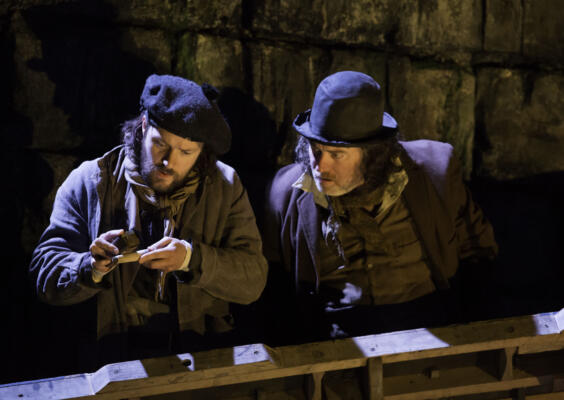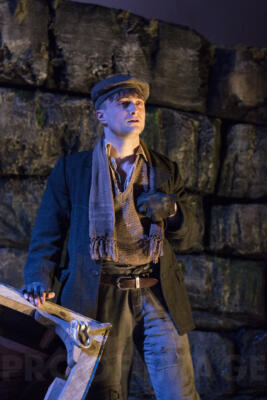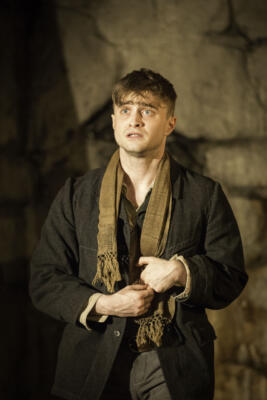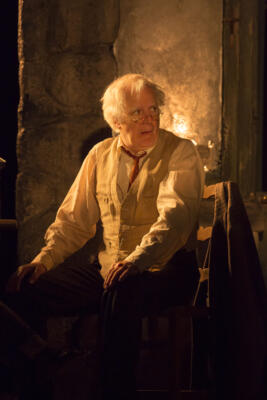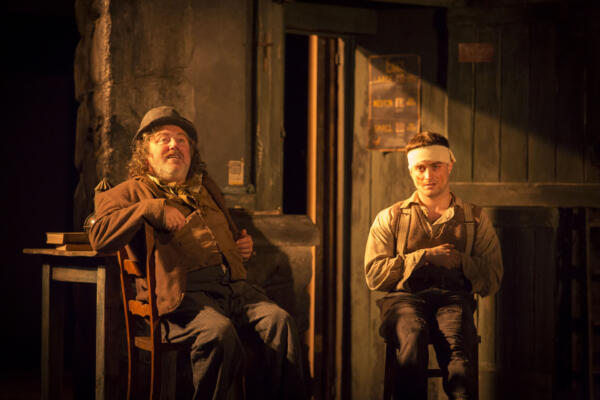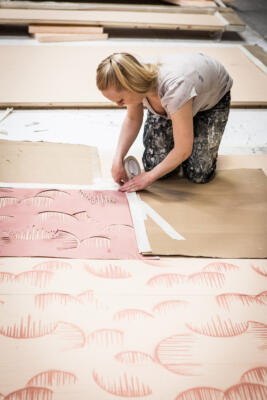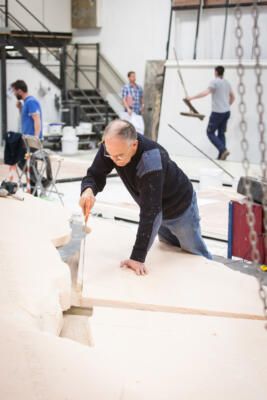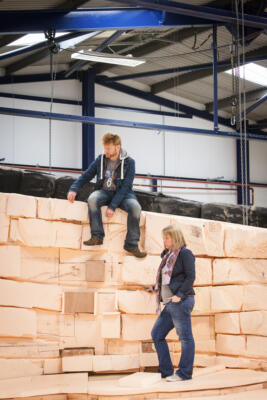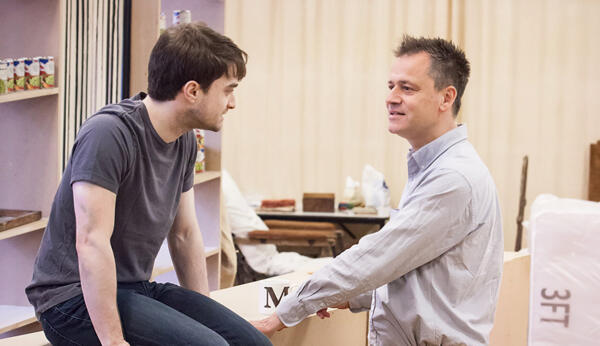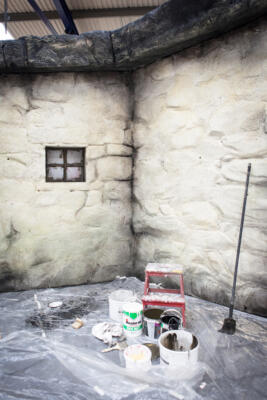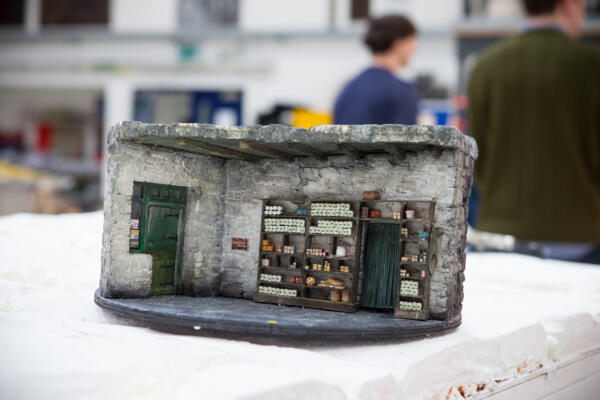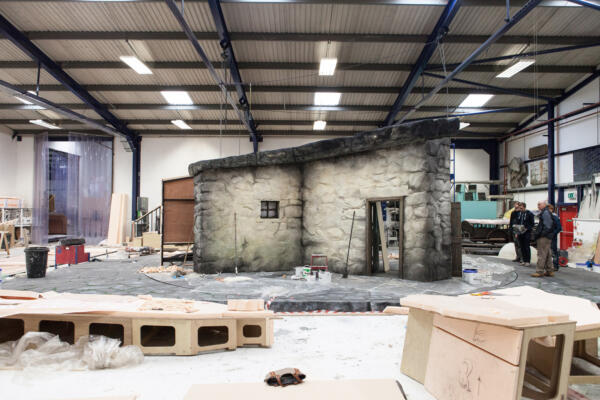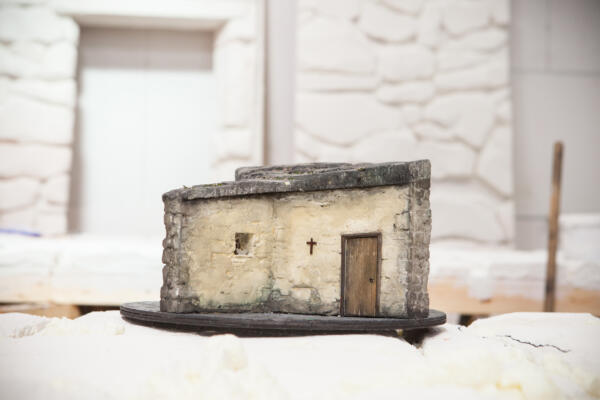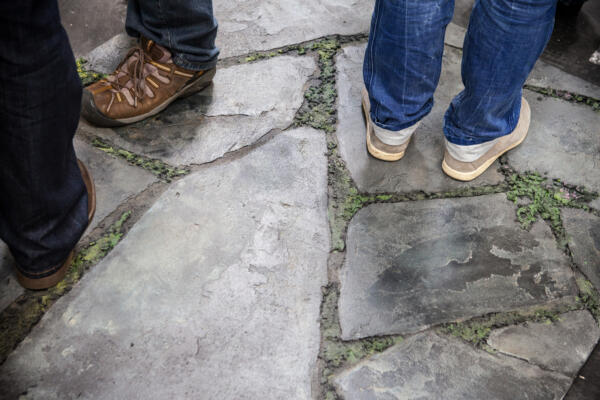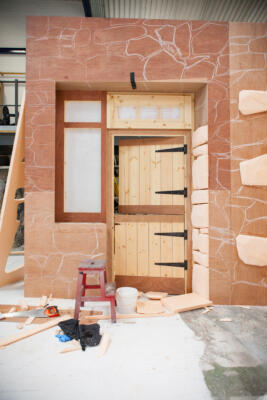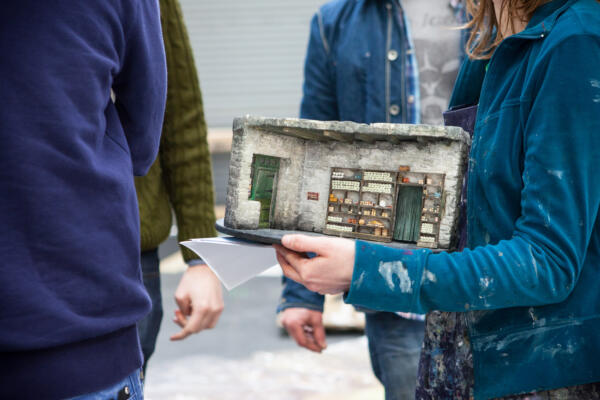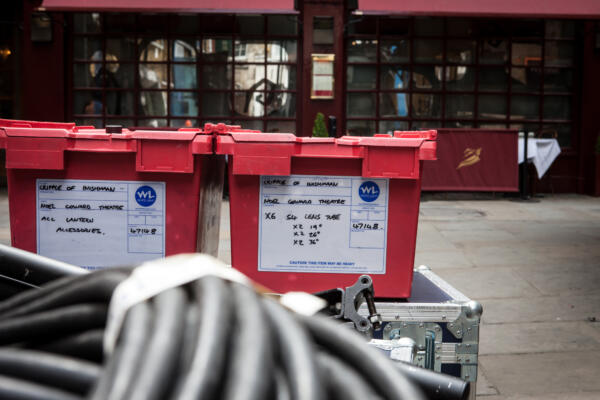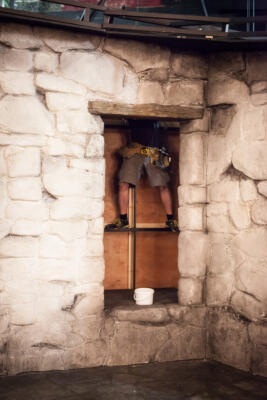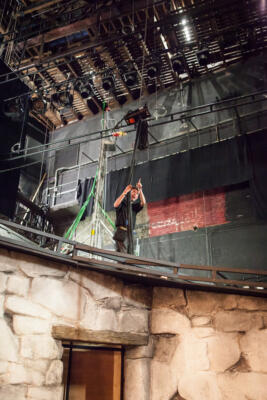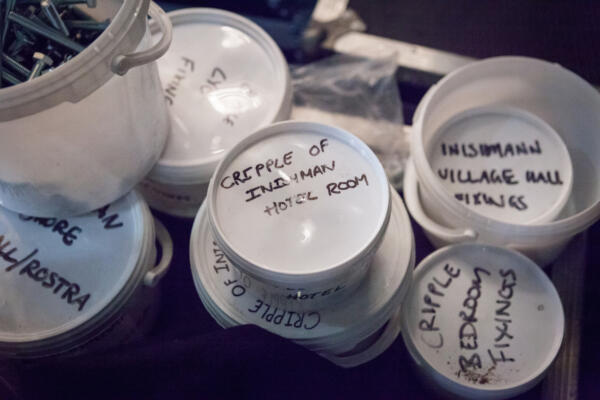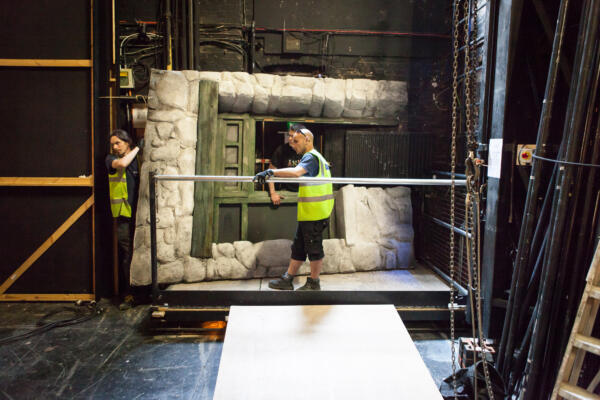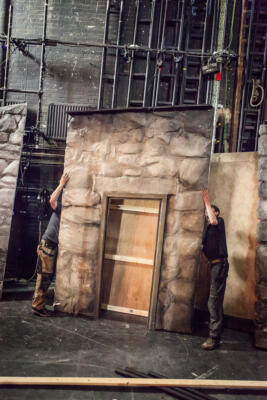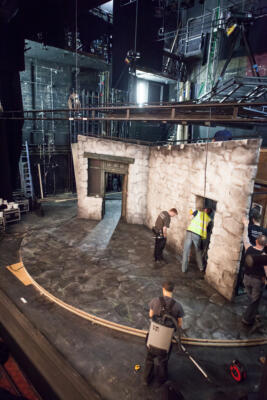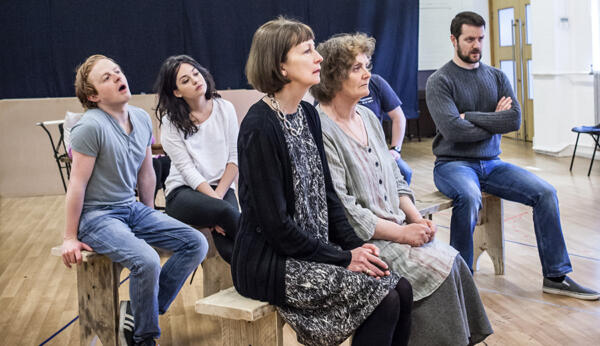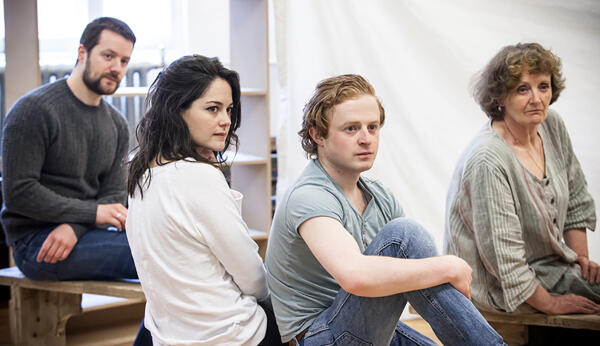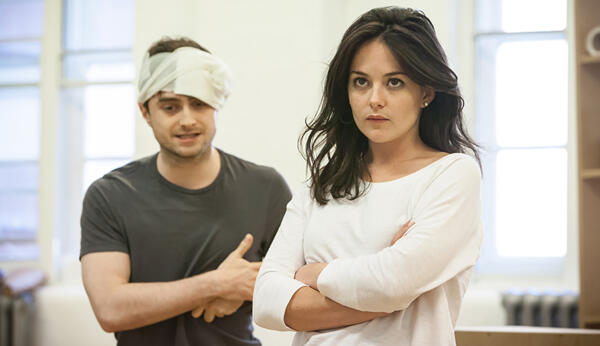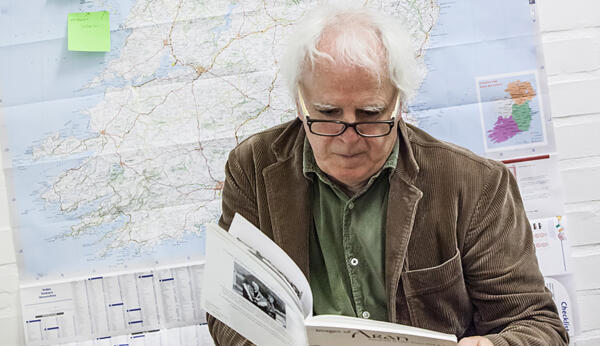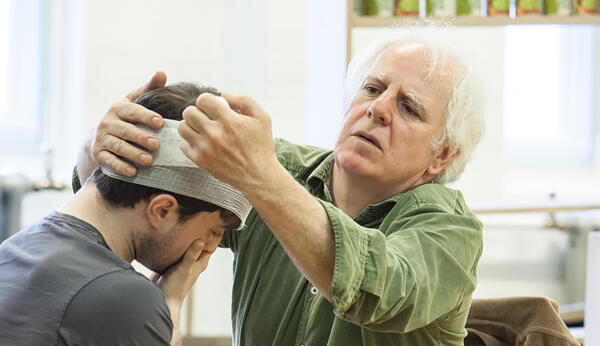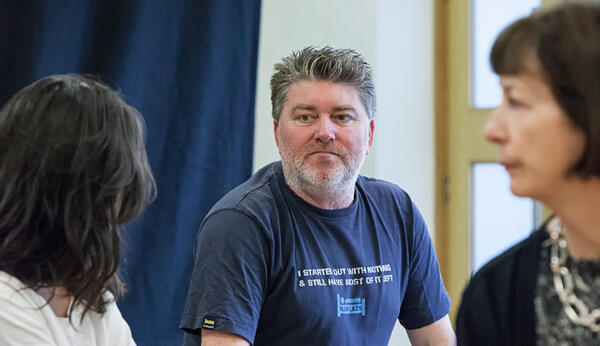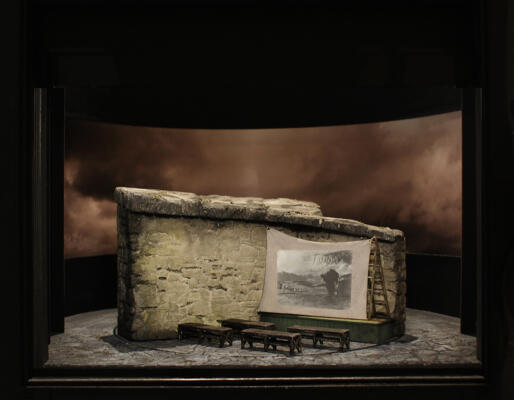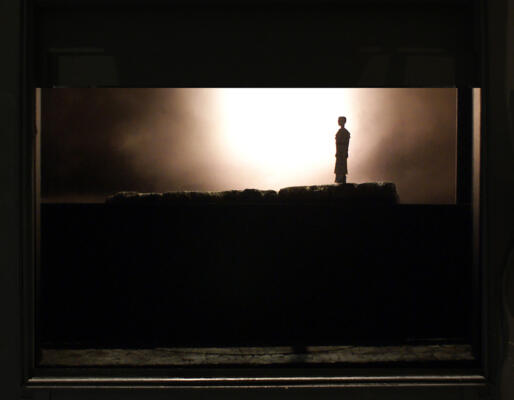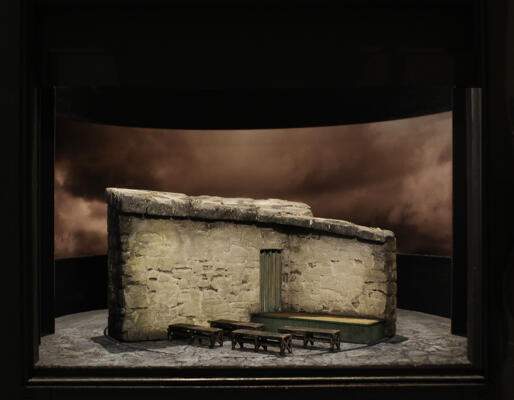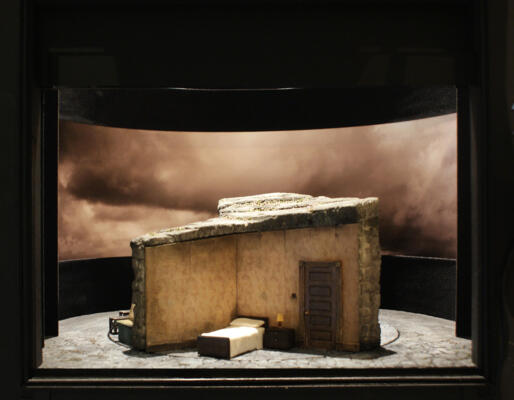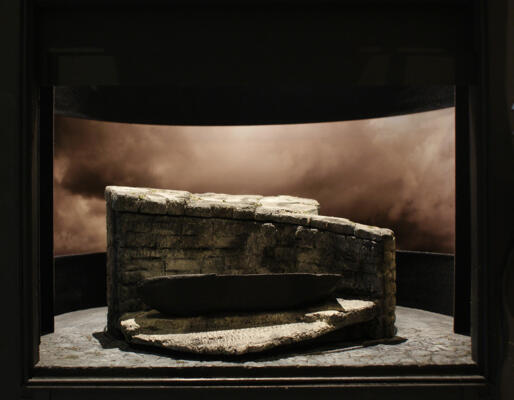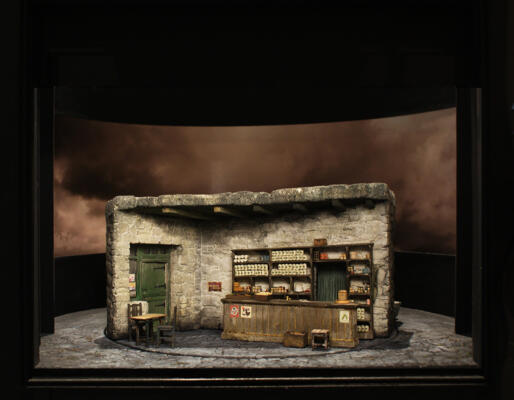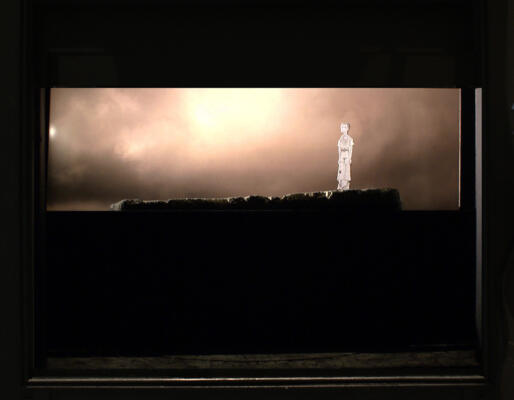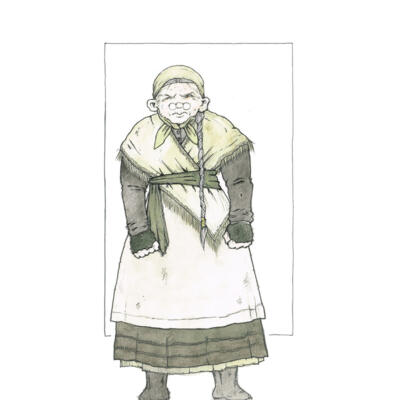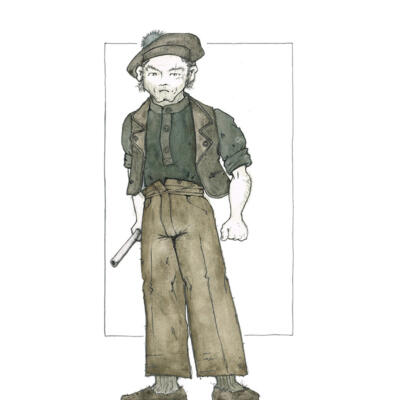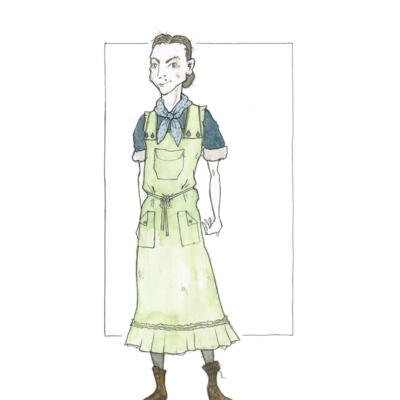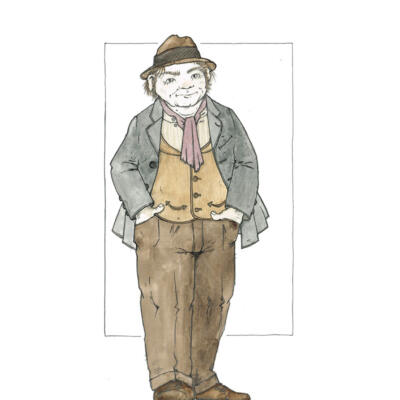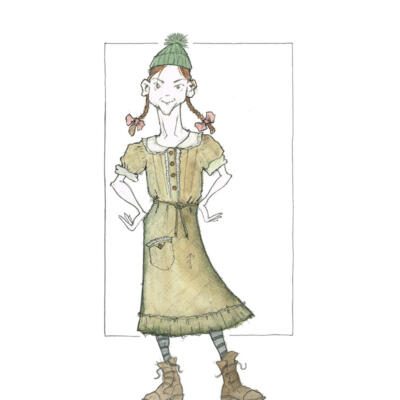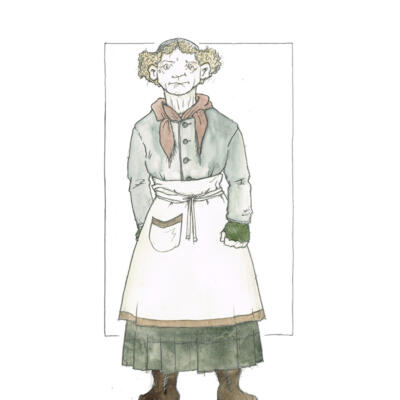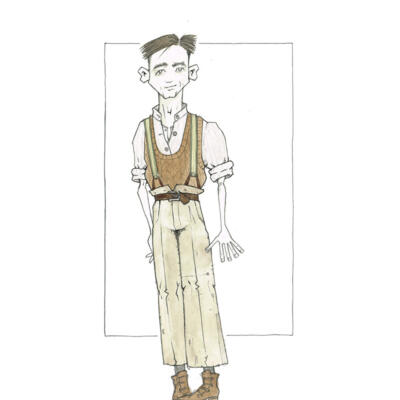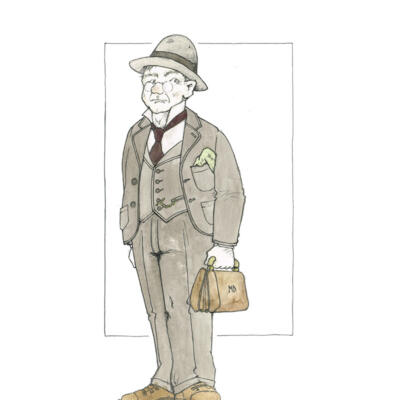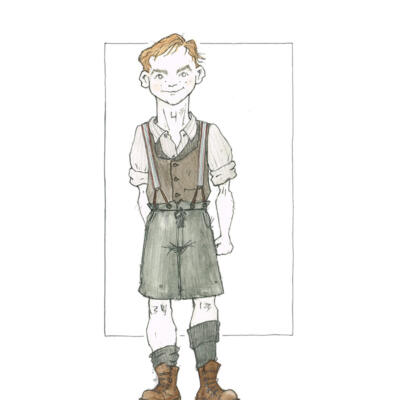The Cripple of Inishmaan
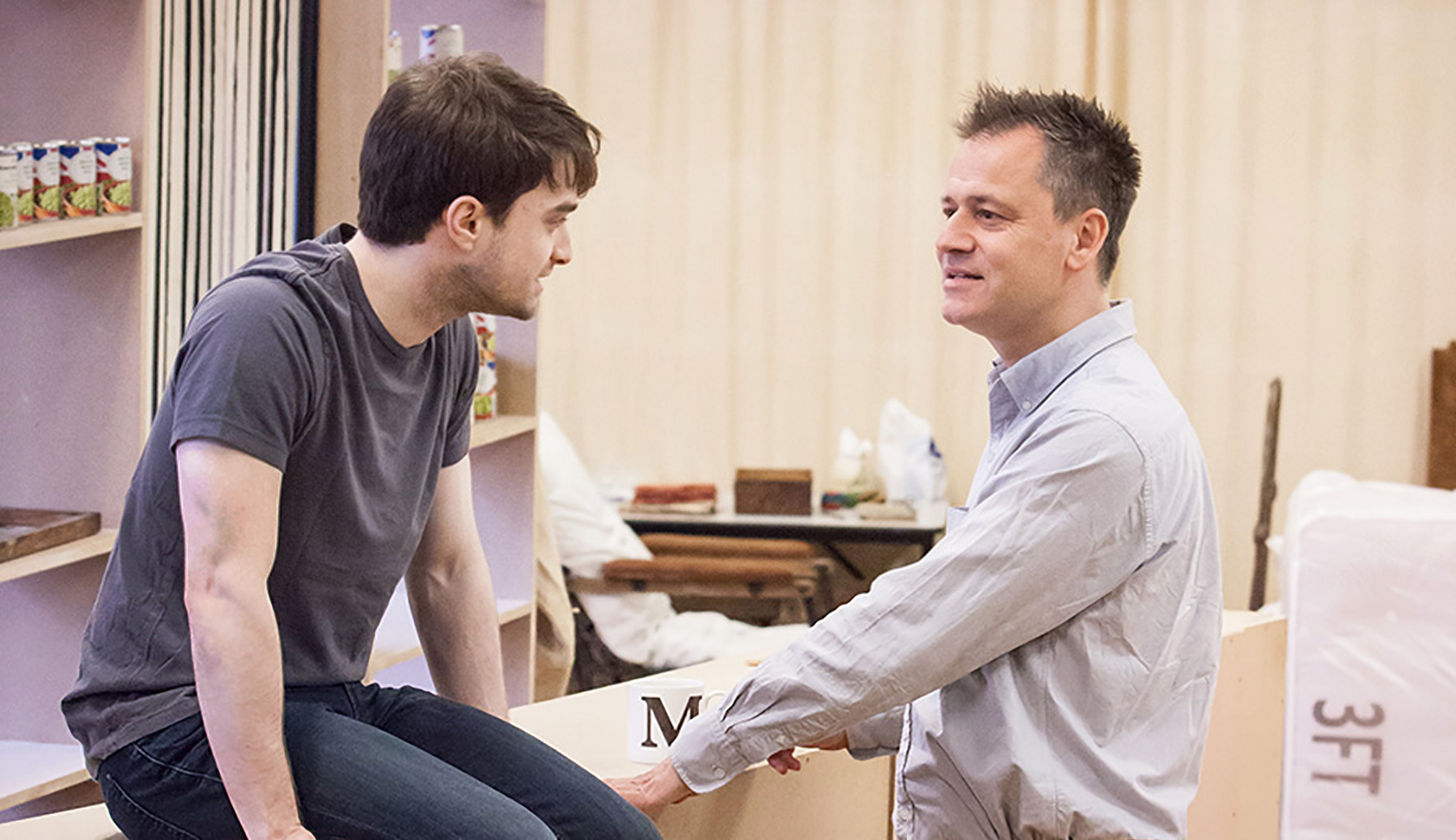
“I shouldn’t laugh at you Billy… but I will.”
About the work
2013
Welcome to the Michael Grandage Company’s production of The Cripple of Inishmaan by Martin McDonagh
Set on the remote island of Inishmaan off the west coast of Ireland, word arrives that a Hollywood film is being made on the neighbouring island of Inishmore. The one person who wants to be in the film more than anybody is young Cripple Billy, if only to break away from the bitter tedium of his daily life.
Martin McDonagh’s comic masterpiece examines an ordinary coming of age in extraordinary circumstances and confirms his position as one of the most original Irish voices to emerge in the second half of the twentieth century. Daniel Radcliffe plays the title role in the first major London revival since its premiere at the National Theatre in 1996.
“I had seen Daniel Radcliffe in How to Succeed in Business Without Really Trying on Broadway and asked if he wanted to follow up Equus in England with any other play. The answer was yes. Out of our discussion came something I didn’t know about, which was his Irish background – his father is Irish – and his interest in the Irish repertoire. I presented The Cripple of Inishmaan to him as a play which hasn’t been seen in London since its premiere and which I would really like to do – the comic but desolate world, the landscape too, that Martin McDonagh creates really appealed to me. I think it’s already seen as a modern classic.”
Michael Grandage, Artistic Director, MGC
The island of Inishmaan, off the west coast of Ireland, circa 1934.
The isolated islanders are excited to learn of the arrival of a Hollywood film crew on neighbouring Inishmore, there to make a documentary about life on the Aran Islands.
17‑year‑old Billy Claven, desperate to escape the monotony of Inishmaan, is eager to be a part of the film. An orphan and outcast, ‘Cripple Billy’ has been raised by his harsh but well-meaning aunties, Kate and Eileen, ever since his parents drowned in the rough seas off Inishmaan. It seems that nobody ever really wanted Billy, but perhaps Hollywood will?
Maybe that will stop local newsman Johnnypateenmike’s stupid gossiping about him? Or better yet, attract the attention of the beautiful yet terrifying Helen? But first he’s got to find a way to cross the sea to Inishmore… Once there, will he ever come back?
| Role | Credit |
|---|---|
| Director | Michael Grandage |
| Set & Costume Designer | Christopher Oram |
| Lighting Designer | Paule Constable |
| Composer & Sound Designer | Alex Baranowski |
| Casting Director | Anne McNulty |
| Wig & Hair Designer | Campbell Young |
| Production Manager | Paul Handley |
| Company Stage Manager | Katy Bryant |
| Deputy Stage Manager | Rhiannon Harper |
| Assistant Stage Manager | Ralph Buchanan |
| Dialect Coach | Penny Dyer |
| Props Supervisor | Celia Strainge |
| Costume Supervisor | Stephanie Arditti |
| Head of Wardrobe | Tim Gradwell |
| Head of Wigs & Make-Up | Gemma Flaherty |
| Deputy Head of Wardrobe | Charlotte Stidwell |
| Wardrobe Assistant | Rachael McIntyre |
| Associate Director | Kate Budgen |
| Associate Set & Costume Designers | Lee Newby & David Woodhead |
| Associate Lighting Designer | Rob Casey |
| Associate Sound Designer | Ella Wahlström |
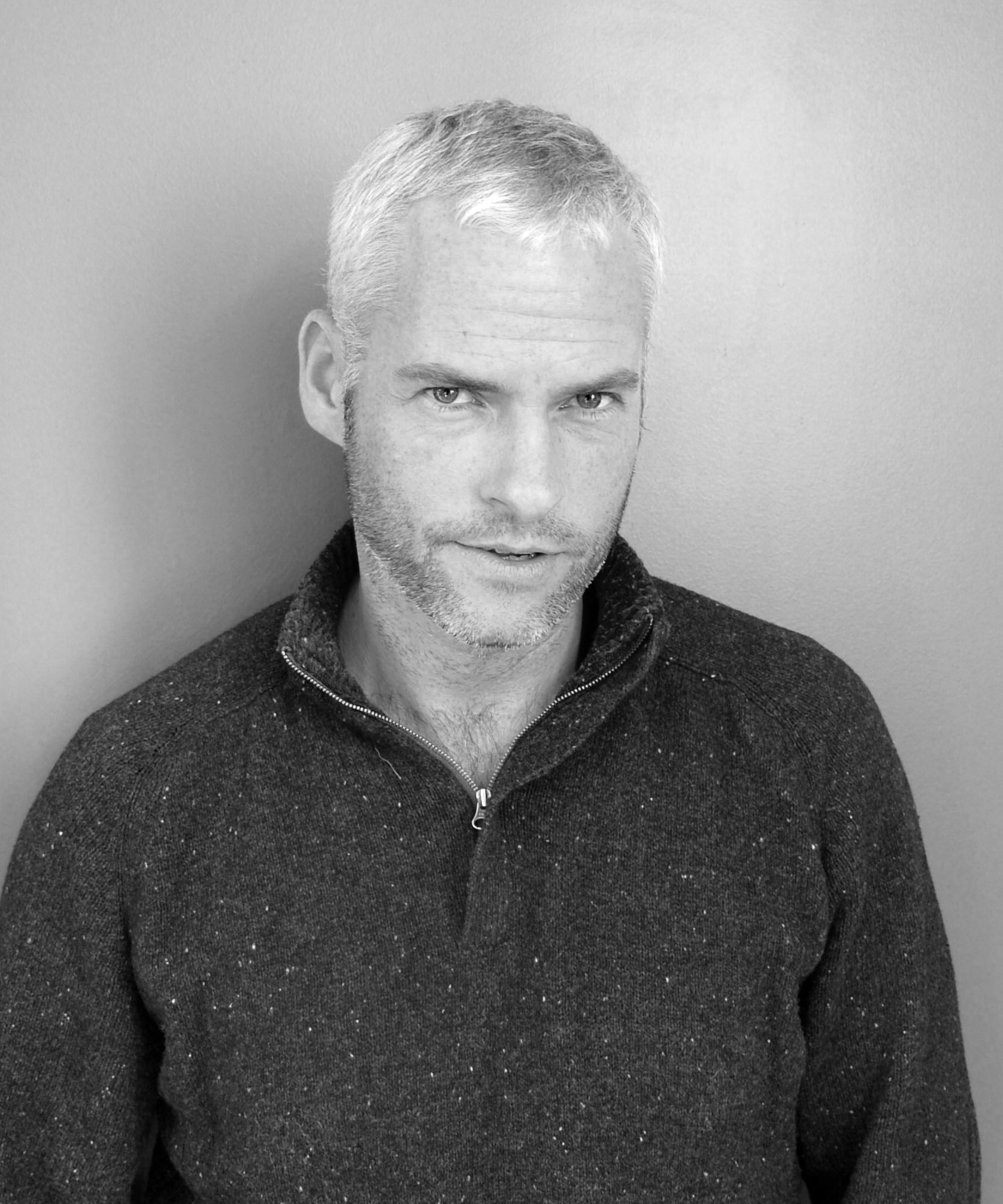
Martin McDonagh
Martin is a multi award-winning writer and director. His plays include The Beauty Queen of Leenane, A Skull in Connemara, The Lonesome West, The Lieutenant of Inishmore, The Cripple of Inishmaan, The Pillowman and A Behanding in Spokane. As a Writer/Director his credits include In Bruges, Seven Psychopaths and Six Shooter (short film).

Kate Osbourne (Ingrid Craigie)
Mid-sixties. A quiet woman, prone to periods of depression brought on by anxiety. She worries about Billy, especially when he’s late home or absent for long, confiding her concerns privately to a stone.
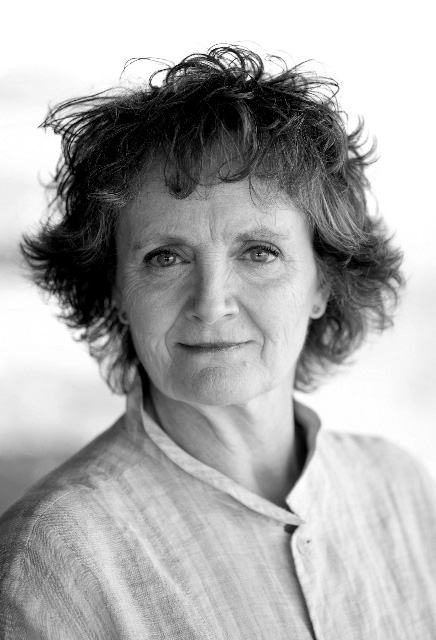
Eileen Osbourne (Gillian Hanna)
Late sixties. More outspoken than her sister, Kate, and quicker to anger. Though outwardly tougher with Billy, she also cares deeply about him. Where her sister finds solace in a stone, Eileen takes comfort in sweets.
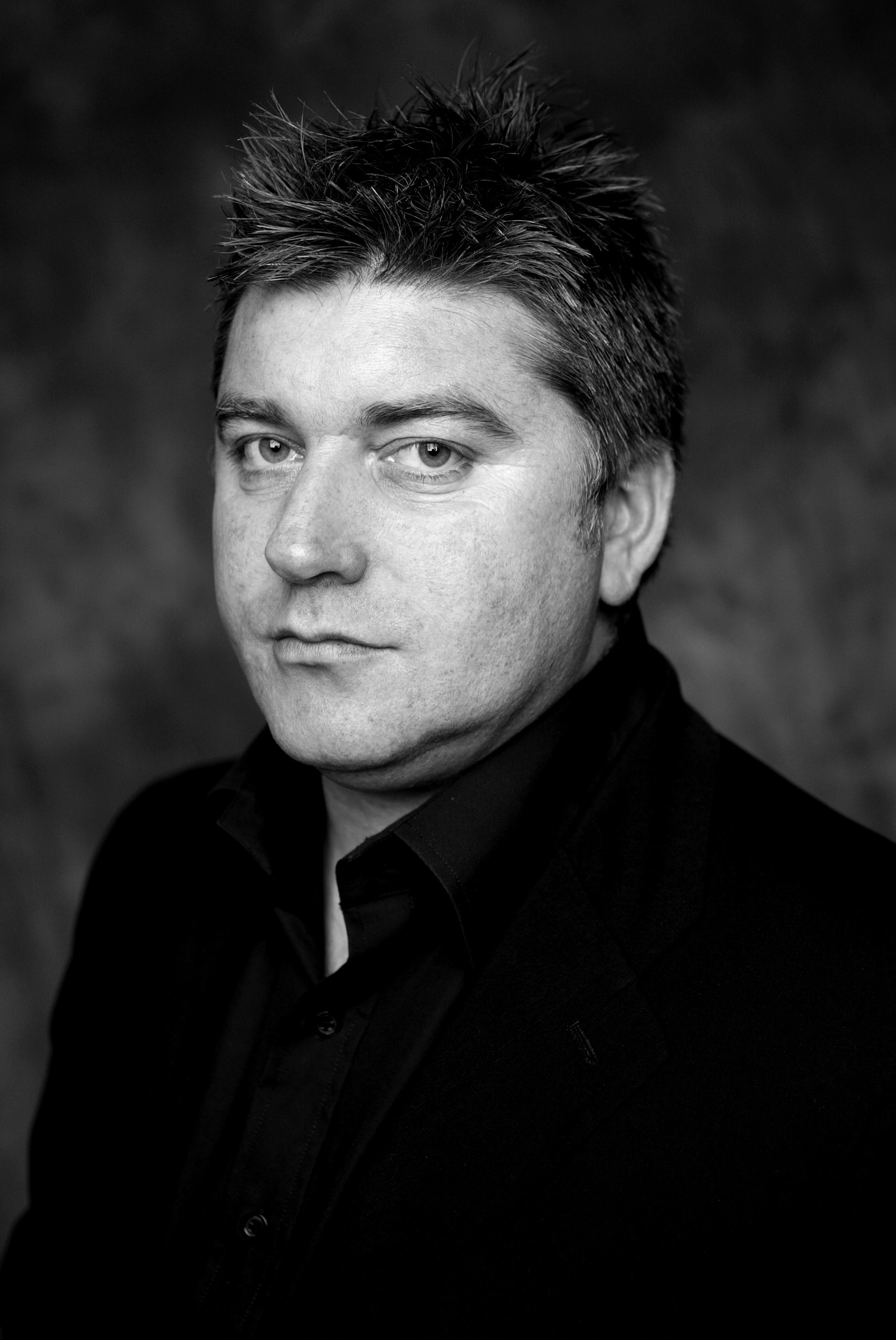
Johnny O’Dougal (Pat Shortt)
‘Johnnypateenmike’, mid‑sixties. The local ‘newsman’ whose reports are essentially gossip and, more often than not, gross fabrication. He lives alone with his drunken Mammy, desperate to be rid of the responsibility of caring for her.
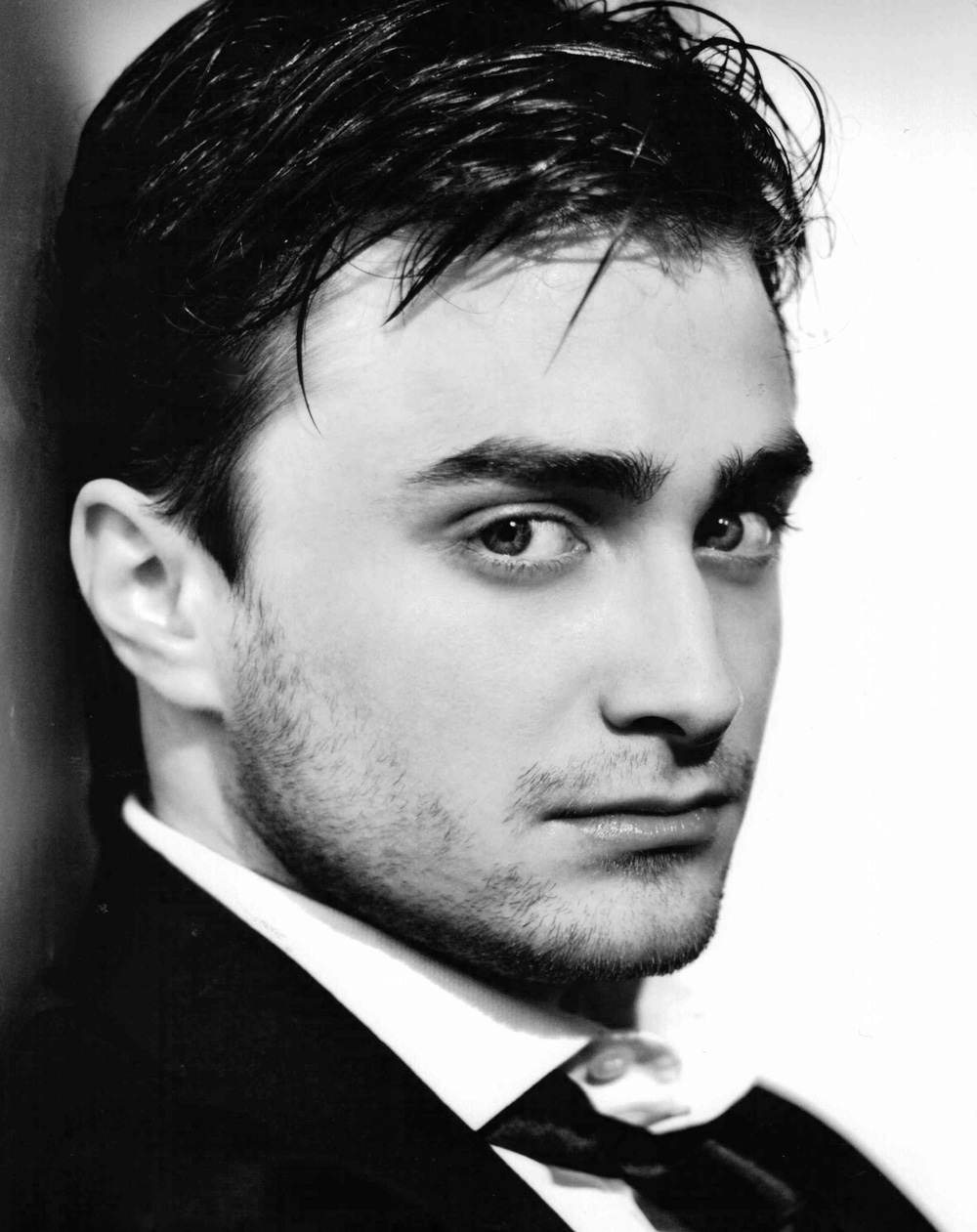
Billy Claven (Daniel Radcliffe)
‘Cripple Billy’, 17‑years-old. ‘One arm and one leg crippled.’ An orphan whose parents drowned at sea, he’s been raised by two local women – his ‘pretend’ aunties. An outcast on the island, Billy longs to leave Inishmaan and explore the world beyond, finding immediate distraction in reading and staring at cows.
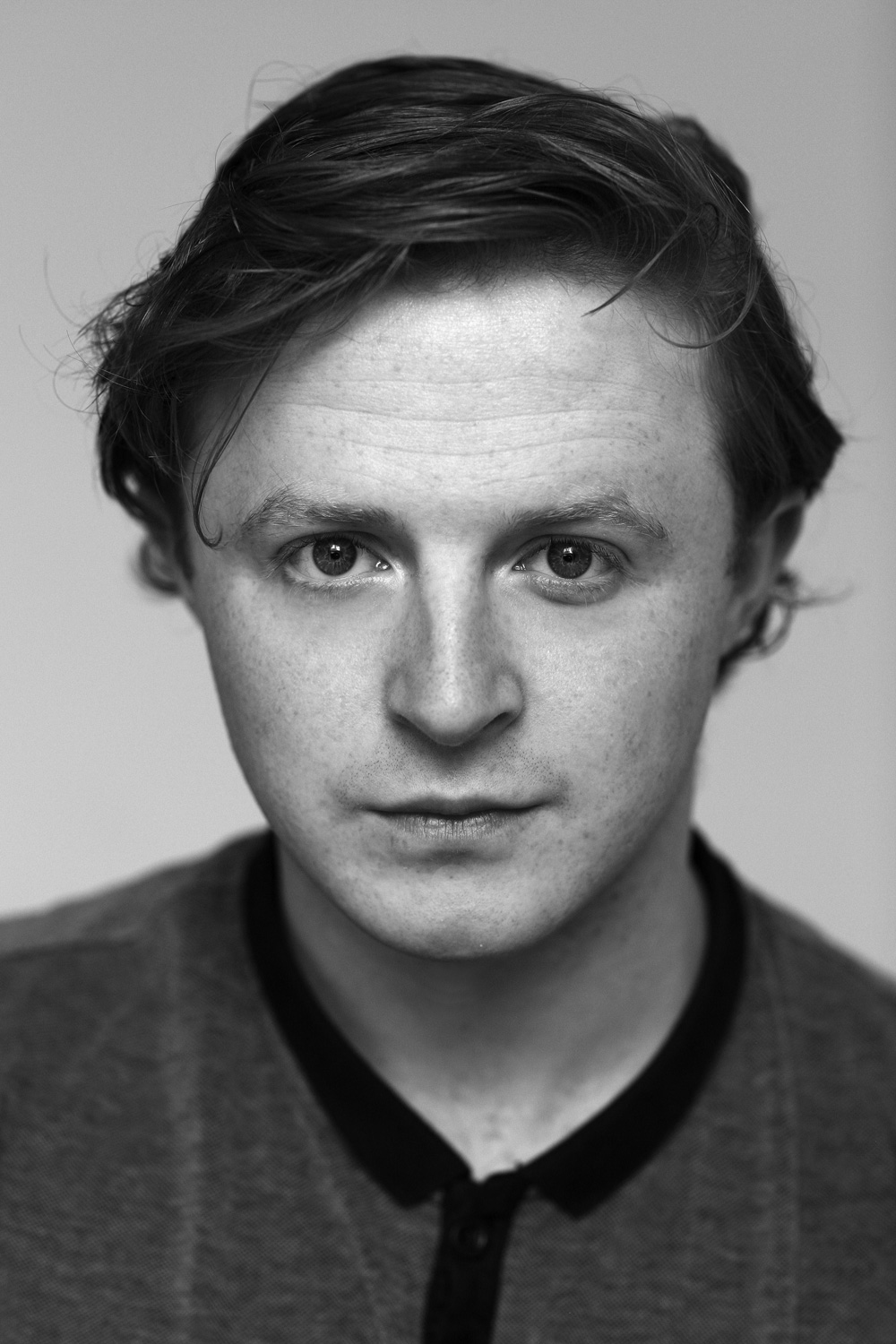
Bartley McCormick (Conor MacNeill)
16‑years‑old. An enthusiastic boy who seems younger than his years, Bartley has a mischievous sense of fun and a passion for ‘sweeties’ and telescopes.
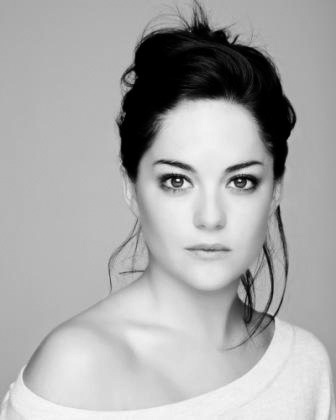
Helen McCormick (Sarah Greene)
17‑years‑old. ‘A pretty girl.’ Bartley’s older sister, her fierce temper is often unleashed on him, or anyone who annoys her. Helen’s cutting and frequently cruel words are, in part, a defence against the advances of men – those she hasn’t invited herself. She treats Billy mercilessly, suspecting he might like her.
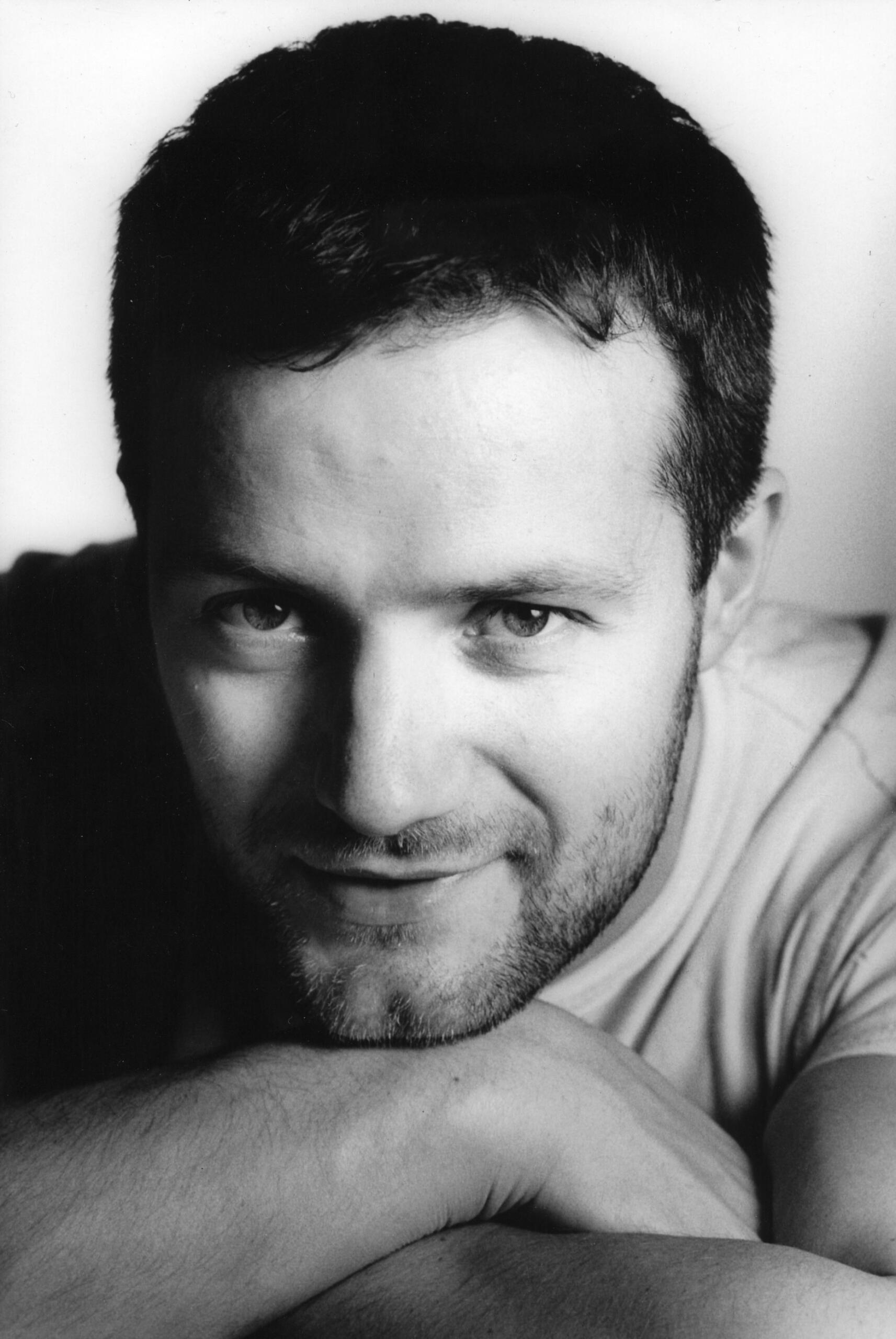
Babbybobby (Padraic Delaney)
Early thirties. ‘Handsome, muscular.’ A local fisherman and widower, he’s not as hard as he first appears. Once crossed, though, Babbybobby is unforgiving in taking his revenge.
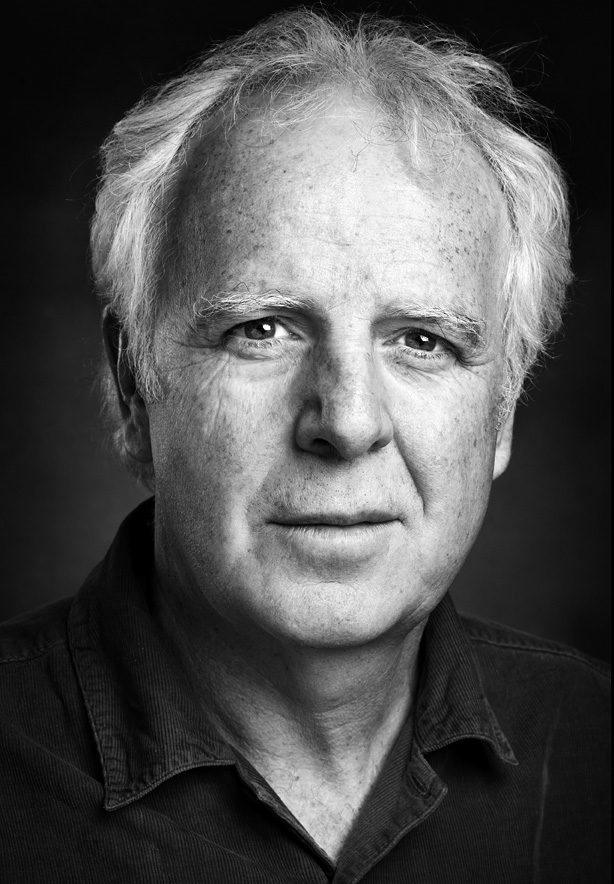
Doctor McSharry (Gary Lilburn)
Early forties. One of the few educated men on Inishmaan, the doctor works hard to combat the gossip and ignorance of the locals, finding his nemesis in Johnnypateenmike and his mistreatment of his mother.
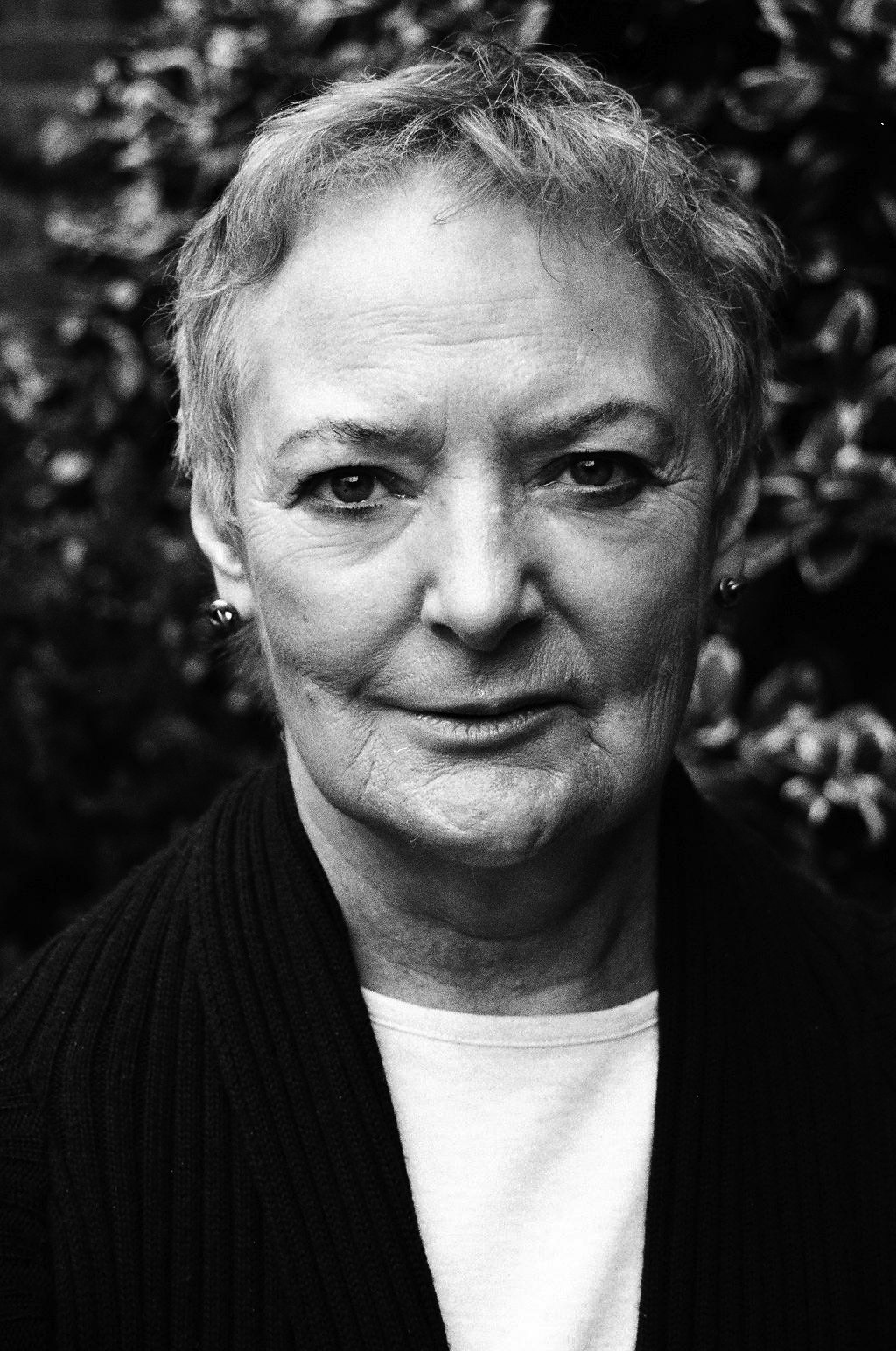
Mammy O’Dougal (June Watson)
90‑years‑old. She’s been trying to drink herself to death for the past sixty‑five years, ever since a shark ate her husband. Mammy still misses him, especially as her only comfort in old age is her ‘goose’ of a son, Johnny.
Tall Tales
Martin McDonagh’s plays flirt with notions of fantasy and reality, conjuring up an Ireland that is both familiar and strange. Patrick Lonergan discovers recurrent themes in the work of one of contemporary theatre’s most distinctive voices.
In March 2013, Tom Cruise visited Ireland to promote his latest film. He did all the things you’d expect a Hollywood star to do: he signed autographs at the movie’s premiere, he was photographed drinking a pint of Guinness, and he charmed the nation when he appeared on The Late Late Show, Ireland’s best known TV chat-show.
Yet his visit was also unusual, in that it included a ceremony organised by the Irish government to present Cruise with a ‘Certificate of Irish Heritage’ – a document that traced his Irish ancestry back to the 12th century. The implication was clear: Cruise might be the world’s most famous American actor, but Ireland was going to stake a claim to at least some of his success. Cruise’s heritage was intended to reflect positively on the entire country – to suggest that, as Martin McDonagh’s characters might put it, Ireland can’t be such a bad place if an actor like Tom Cruise wants to go there.
That event tells us much about Ireland’s need for international attention and approval – and it reminds us also of the relevance of The Cripple of Inishmaan, a play that brilliantly explores the ongoing love/hate relationship between Hollywood and the rest of the world.
For the play’s hero, ‘Cripple’ Billy Claven, Hollywood is both attractive and repellent. Billy knows that Hollywood movies sometimes simplify the world – by embellishing true stories, by using national stereotypes rather than realistic characterisation, or by falsifying reality. Watching The Cripple, we might reach the conclusion that many Irish films are, to quote one of McDonagh’s characters, ‘a rake of shite’, with characters delivering ‘arse-faced’ lines and enacting unrealistic plots. The message here seems obvious: don’t believe everything you see on a cinema screen – or at a theatre.
Yet Hollywood offers Billy something he desperately wants: the chance to escape from Inishmaan, a place so boring that the only way he can entertain himself is by staring at cows. Billy shows a healthy awareness of how filmmakers and other storytellers can manipulate our understanding of the real world – but he also knows that the escapism offered by a compelling story can make a hard life worth living.
Indeed, the themes explored by The Cripple – the lure of Hollywood, the misrepresentation of Ireland and the importance of storytelling – have dominated Martin McDonagh’s career to date.
The Cripple of Inishmaan premiered in London in early 1997, during an extraordinary 18-month period for McDonagh. His theatrical debut The Beauty Queen of Leenane had premiered in Galway in February 1996 and was soon followed by two more Leenane plays, The Lonesome West and A Skull in Connemara. By the summer of 1997, The Leenane Trilogy and The Cripple were all on stage in London, placing McDonagh in the unusual position of having four of his plays in the West End simultaneously – an amazing achievement for a writer who’d been completely unknown two years earlier.
Those four plays were set in a version of the west of Ireland that is both familiar and very strange. McDonagh’s characters lived in a world quite like our own: they watched TV shows like Hill Street Blues and Top of the Pops, supported Manchester United, and were fully aware of events in the world around them, from the civil war in Yugoslavia to the deteriorating reputation of the Catholic Church.
Yet, as the great Irish director Garry Hynes puts it, McDonagh’s characters are also like ‘monstrous children’: crude in manner, thought and language – and often shockingly violent. And their skewed Irish speech is similarly shocking: unnervingly repetitive, jaggedly rhythmic, joltingly funny.
Audiences responded immediately to the inventiveness and originality of McDonagh’s work. Yet as his plays became famous internationally, some commentators began to express concern about McDonagh’s representation of Irishness. They feared that McDonagh might be exploiting and reinforcing negative Irish stereotypes – that he was doing what the filmmaker Robert Flaherty is accused of doing in The Cripple: misrepresenting the country for his own artistic purposes.
As the plot of The Cripple twists and turns, those accusations should seem unfair, however. In a play that challenges our awareness of the differences between truth and fiction, McDonagh places the onus on the audience to interpret what we see. If we allow ourselves to be taken in by stereotypical language and clichéd stories – as many characters in this play do – then perhaps we need to ask an important question: why are we so willing to be fooled by stories that are self-evidently fake?
That’s a question that McDonagh has continued to ask.
Since The Cripple premiered, McDonagh has followed Billy’s path to Hollywood, where he won an Oscar for Six Shooter – a success he followed up with the worldwide hit In Bruges. His latest movie Seven Psychopaths takes up where The Cripple left off, showing that it’s easy to criticise movies for being manipulative – but also emphasising why films matter so much to us. Both Cripple and Psychopaths argue that we need great stories – and they also show why, as a character in McDonagh’s brilliant 2003 play The Pillowman suggests, ‘the only duty of a storyteller is to tell stories’.
In The Cripple, then, we find a play that has much to say about life now. Ireland is certainly not the only country in the world that has a fascination with Hollywood stars like Tom Cruise, and McDonagh invites us to consider why that might be. Yet he also reminds us of why we need stories: because they reveal who we really are, show us what we might someday achieve, and can provide us with solace from the real world. Or, as Robert Flaherty put it, ‘Sometimes you have to lie. One often has to distort a thing to catch its true spirit’.
Patrick Lonergan is Professor of Drama, Theatre and Performance at National University of Ireland, Galway, and is the author of The Theatre and Films of Martin McDonagh (Methuen, 2012).
This article was originally published in the programme to accompany the Michael Grandage Company’s production of The Cripple of Inishmaan at the Noel Coward Theatre in 2013.
Further Reading
The Cripple of Inishmaan by Martin McDonagh (Methuen, 1997).
The text of the play.
The following books were in the rehearsal room for The Cripple of Inishmaan:
- Magnum Ireland – Thames & Hudson
- Ireland’s Islands – Landscape, Life and Legends – Peter Somerville-Large
- The Burren and the Aran Islands – Exploring the Archaeology – Carleton Jones
- The Burren and the Aran Islands – A Walking Guide – Tony Kirby
- The Aran Islands – A World of Stone – Mairéad Ashe FitzGerald
- Walls of Aran – Sean Scully
- Images of Aran – Photographs by Father Brown 1925 & 1938 – E.E. O’Donnell
- Framing the West – Images of Rural Ireland 1891 – 1920 – Ed. Ciara Breathnach
